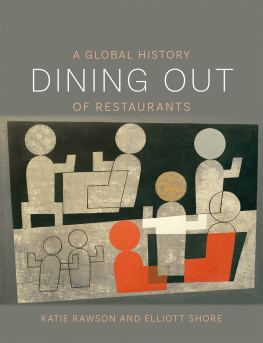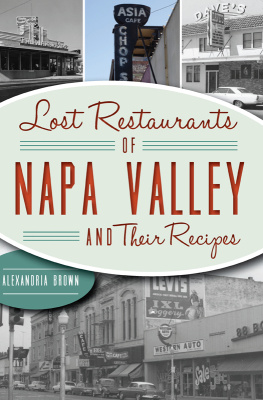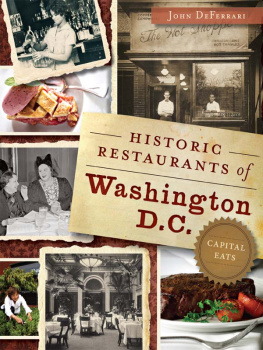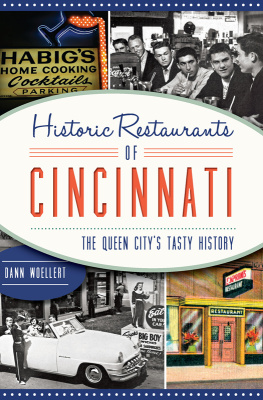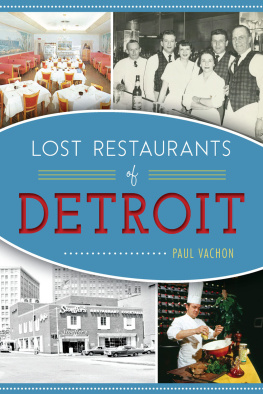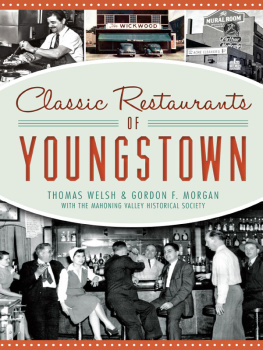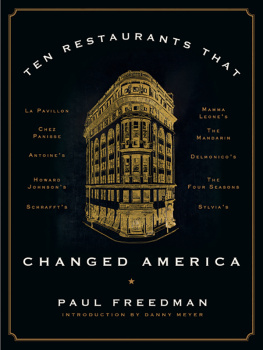DINING OUT

A GLOBAL HISTORY
DINING OUT
OF RESTAURANTS
KATIE RAWSON & ELLIOTT SHORE
REAKTION BOOKS
To those who fed us
Published by Reaktion Books Ltd
Unit 32, Waterside
4448 Wharf Road
London N1 7UX, UK
www.reaktionbooks.co.uk
First published 2019
Copyright Katie Rawson and Elliott Shore 2019
All rights reserved
No part of this publication may be reproduced, stored in a retrieval system, or transmitted, in any form or by any means, electronic, mechanical, photocopying, recording or otherwise, without the prior permission of the publishers
Page references in the Photo Acknowledgements and
Index match the printed edition of this book.
Printed and bound in China by 1010 Printing International Ltd
A catalogue record for this book is available from the British Library
eISBN 9781789140958
CONTENTS
PREFACE
People the world over eat outside the home as an unquestioned part of everyday life. At a roadside stand, in a fancy restaurant, on an aeroplane, at a fast-food joint, at a diner, a pizzeria, a neighbourhood hangout, from a street vendor, in a caf, at a cafeteria, from a vending machine. The list is virtually endless and the number of restaurants in the world likely exceeds 15 million Japan appears to have the most restaurants per capita: 91 per 10,000 inhabitants. In this book, we wanted to investigate the story of how dining out may have developed over the ages and throughout the world.
We have aimed to produce a global history of restaurants, which may appear to be a bold claim for one volume given the depth, breadth and length of the human experience of dining out. What we have done is both ask and answer questions, in vignettes and threads that are both synthetic and idiosyncratic, delving into many of the aspects of the development of the restaurant over the centuries. The book is as much about the history of working in restaurants as it is about the history of eating in them. It considers the distinctive features of places where people across the globe have dined out, from the first traces of what we know about people eating together in public. Relating a global history of restaurants through different facets chefs, machines, reviews, international exchange helps us to present restaurant history as a history not only of food, but of culture, economics and technology. We trust that this work will bring new insights into eating out by featuring people and innovations many of which are not generally known that have propelled us to the present phantasmagoria of the world of the restaurant. It is a book intended to help us reconsider, resituate and more deeply understand the people, restaurants and moments that are significant to the development of this central feature of modern life.
In , we end by explicitly taking up the notion of the global restaurant, investigating how food moves from one place to another, and how immigration and local palates shape what and how we eat over time. We hope you will enjoy the journey into this set of oft-told (and untold) stories about the history of restaurants, and that the contours and constraints of this book will encourage other stories and histories of restaurants around the world to be told. Bon apptit!
EATING AWAY FROM HOME:
THE LONG HISTORY OF RESTAURANTS
Eating out is such a familiar activity one imagines that people must always have been doing it, and that the restaurant must be a very old part of human culture. A history of restaurants therefore is a history of many aspects of culture social, technological, political, aesthetic and economic.
In the West, people are eating out more and more. Cooking a complete meal together at home can become a special occasion, one that celebrates family life. Much of the food we eat at home is either now taken out from restaurants, delivered to the door, prepared at supermarkets or bought at those same markets already processed to the point where we need only fire up the microwave to ready it for consumption. In many ways, eating at home is now an extension of eating out, rather than the other way around.
Historians of everyday life like to find origins, first examples: we like to know where the things that seem to have always existed began, and how they evolved into routine parts of human existence. The technological history of eating is a very long one: about 2.5 million years ago early hominins developed the practice of cutting and smashing food in order to swallow and digest it more easily. These practices meant less chewing, which enabled us to evolve smaller jaws and more articulable lips, allowing for human speech and better balance. Between 300,000 and 30,000 years ago, humans began cooking and agriculture burgeoned.
People have taken food on the road or to work with them for millennia. They have also bought prepared food from vendors for thousands of years. However, restaurants seem to be a relatively new phenomenon. All of the elements of eating in a restaurant had to be invented. In the Western world, they only got their start around the time Europe began stirring politically from its reliance on hereditary nobility; however, that does not mean that the restaurant is necessarily an offshoot of democracy. The beginning of the restaurant in Europe certainly was bound up with the seismic changes in the world of the mid-eighteenth century the political and social upheaval that would erase the monarchy, change the calendar and, at least temporarily, overturn the relationships between social classes that had been sanctioned by religion and precedent. But we will turn to the birth of the modern Western restaurant in Paris in the next chapter, because the first restaurants did not begin there. They began in twelfth-century China, which was itself experiencing a change in governmental structure and a boom in urban populations.
Eating out has always been framed by both social norms and economics. In this chapter, we consider the developments across the world that led to the restaurant, a cultural institution aimed at feeding appetites away from home.
In the ancient world, one would eat with a regular set of people on a daily basis; however, there were occasions when people expanded their group of dining companions. The occasions that changed peoples dining behaviours, for both eating with strangers and eating in public, were travel (for work, religion, war, trade), negotiation (commerce, diplomacy) and celebration. Food and drink, taken together, by people who were not related to one another, was a feature of the most ancient societies of which we have a record. While the concept of a restaurant took much longer to develop, the theatricality of religious processions, and the special foods for special occasions, would be altered to form part of restaurant culture. These shifts in practice are the beginnings of behaviours that would transmute themselves eventually into such things as waiting to be seated, speaking to a waiter, looking at a menu and being served food cooked ostensibly just for you and your companions in a space that allowed for a private group to eat in a public or semi-private space. To eat in a restaurant is to eat in public, interacting with people who are not related to us and who are performing a service for which they are rewarded.
In a moment, we will turn to the feasts and forums of dining; however, we begin where our material evidence of eating out begins, with workers. In the Copper Age (also known as the Chalcolithic,

